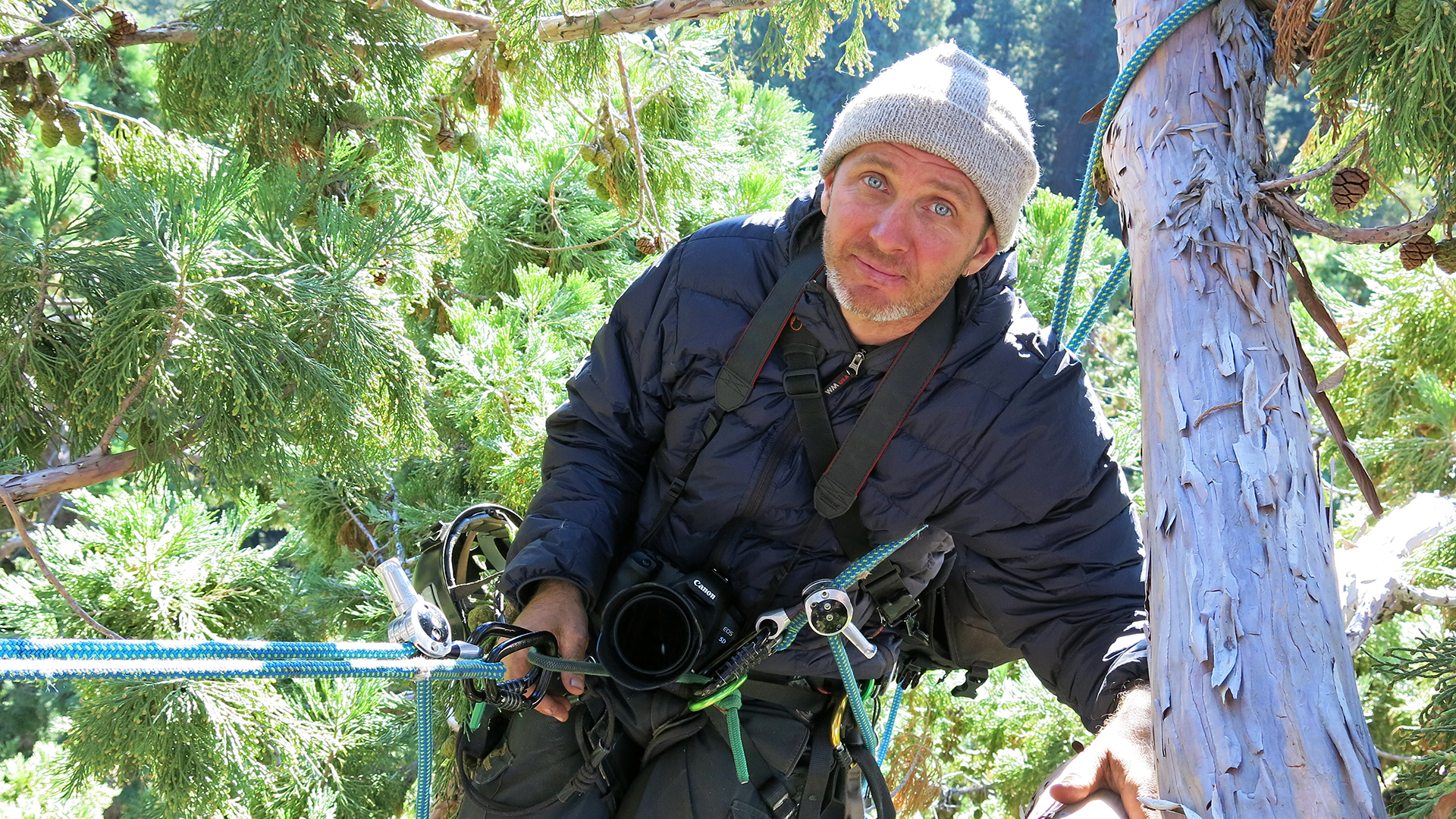
“The giant sequoias are beautiful, massive, ancient beings, and being at the base of one and seeing this big orange trunk… is an incredibly humbling experience.”
Nothing captures the vastness of the Earth like attempting to wrap your arms around a giant sequoia tree, with a trunk as wide as a building. California’s Sequoia National Park, established 26 years before the National Park Service began in 1916, is lined with these vertical behemoths, which can soak up more than 2,000 to 3,000 litres of water daily while growing skyward and outward as they have for thousands of years.

Professor Anthony Ambrose – a tree biologist and research scientist at UC Berkeley – is the ultimate caretaker of the giant sequoia, considered to be one of the oldest living things on Earth. As an undergrad and graduate student, he studied the natural resource management of redwood trees, an even taller but skinnier tree that thrives along the state’s Pacific Coast. Today, he regularly climbs to the tops of the giant sequoias, working in the 200- to 300ft-high canopies to gather information on how the enduring California drought is affecting one of Earth’s most ancient species.

His research partners include Sequoia National Park, the US Geological Survey and the Carnegie Airborne Observatory. In 2014, they found that water stress was causing certain giant sequoias to shed 15% more of their leaves than had ever been observed. Yet, up close, fire scars, evidence from lightning strikes and new trees growing out of fallen sequoias all confirm the resilient nature of these living elders.
“I have a personal, spiritual attachment to this entire forest. The giant sequoias are beautiful, massive, ancient beings, and being at the base of one and seeing this big orange trunk that’s five to seven metres in diameter and 90m tall – with sprawling crowns and massive scars – is an incredibly humbling experience,” Ambrose said.
Download Flash Player nowYou need to install Flash Player to play this content.
Plus, the trees stand within full view of Mount Whitney, the highest mountain summit in the contiguous United States. “It’s a tremendously beautiful area,” he continued. “I’m incredibly fortunate to be able to do these physically demanding, adventurous climbs within the giant sequoias’ crowns and get an experience that not a lot of people are able to have.”
Beyond climbing, Ambrose has hiked or observed nearly every inch of Sequoia National Park and has a few favourite spots that anyone can access. “Moro Rock, is an easily accessible granite dome overlooking the middle fork of the Kaweah River, right on the edge of the Giant Forest grove that provides amazing views of the surrounding [High Sierra Nevada Mountains], the watershed and the central valley of California,” he said. Other must-sees include Crescent Meadow to witness wildflowers in the springtime and black bears and deer foraging on the grasses throughout the park.

Why millions of people venture to Sequoia National Park to gaze at – and take pictures with – giant sequoias is no mystery. In their presence, you feel a sense of limitless awe. Everyone who visits them usually chooses a favourite tree – like the 2.7 million pound General Sherman, the largest known living tree on Earth – to pose in front of and show that scale. Ambrose prefers The President, which was on the cover of National Geographic in 2012: “I think is actually even more impressive than the General Sherman. Though it’s slightly smaller by width volume, it’s got a way more impressive crown.”
No matter which tree stands out the most, Sequoia National Park is something to see up close. And Ambrose’s perspective offers an unmatched view from above.

If you liked this story, sign up for the weekly bbc.com features newsletter, called “If You Only Read 6 Things This Week”. A handpicked selection of stories from BBC Future, Earth, Culture, Capital, Travel and Autos, delivered to your inbox every Friday.